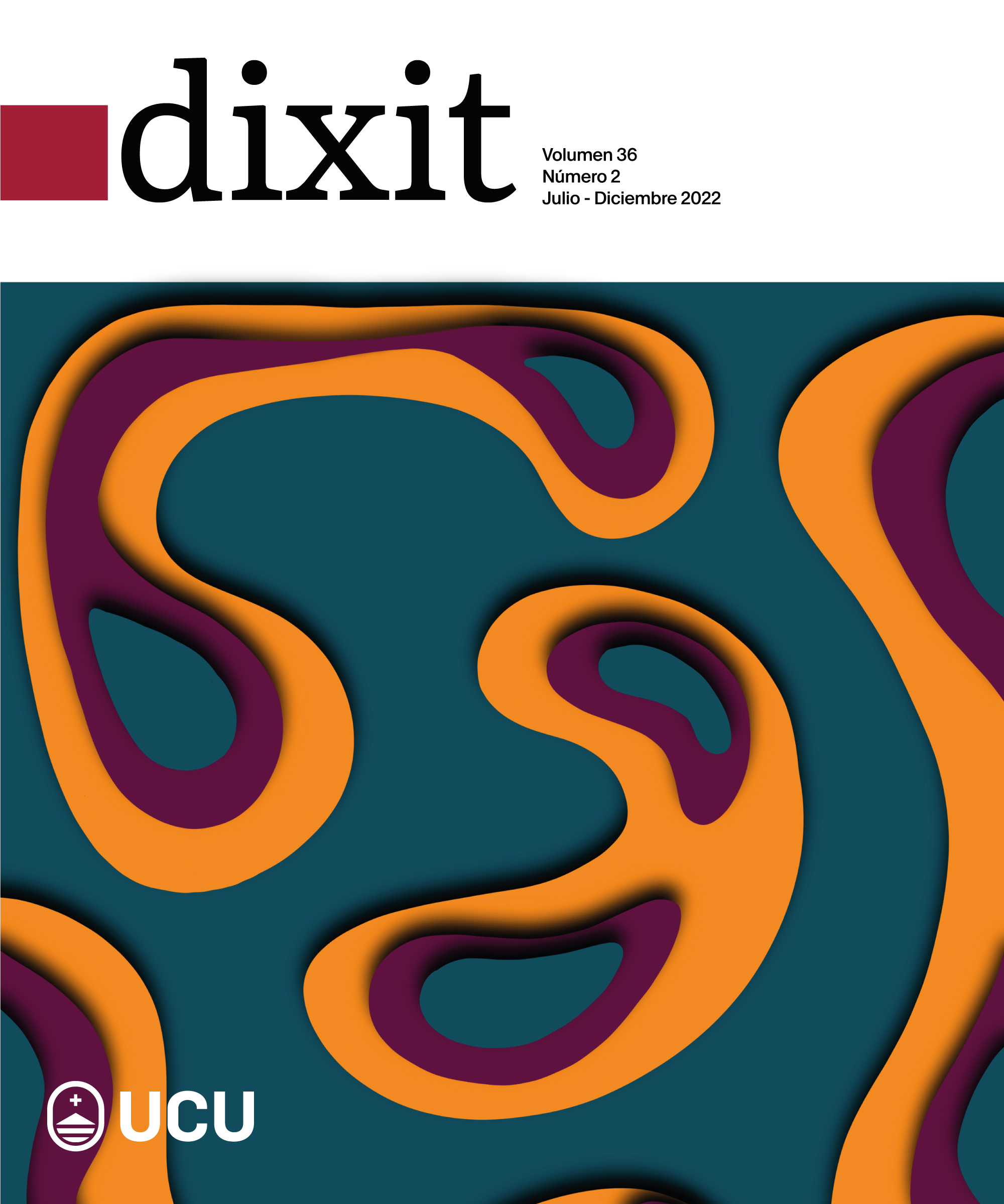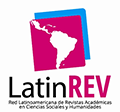The Girl, the Forest, the Wind and All the Memory in the World. Sensory Paths in Paz Encina’s EAMI
DOI:
https://doi.org/10.22235/d.v36i2.3032Keywords:
Paraguayan cinema, visual and sensory anthropology, materialisms, affects, extractivism, memoryAbstract
EAMI, the fourth feature film by Paz Encina, introduces an ethical interest in the construction of a memory already present in Encina´s previous films, but here it assumes a cosmopolitics that redefines the relationships between humans and the more than human. In its ways of accounting for the extractivist advance, the territorial dispossession and the extermination of the Ayoreo world, EAMI problematizes the dichotomy between fiction and documentary not only because the testimonies and recreations that it stages speak the language of that community, but also because they follow their worldview, their understanding of time and space. Based on recent studies on new materialisms and affect, reflections on Amerindian ontologies and visual anthropology, this essay aims to discuss the ways in which this documentary rearticulates the order of the sensible to delimit the order of what matters. If the decapitation of the forest is also the destruction of their common forms of understanding, EAMI’s act of memory seeks to create a sensory atmosphere and a temporality that makes it possible to broaden the audience for this loss. Inscribed in its formal language, the film assumes the denunciation of the Ayoreo and tries to subdue our (in)sensitivity of coñone (the term with which that community refers to all outsiders as "the insensitive") to make us participate in the suffering of another people.
Downloads
References
Andermann, J. (2021). Memories of Extractivism: Slow Violence, Terror, and Matter. Journal of Latin American Cultural Studies, 29(4), 537-554. https://doi.org/10.1080/13569325.2020.1805589
Bennet, J. (2022). Materia vibrante. Buenos Aires, Argentina: Caja Negra.
Casaccia, G. M. (2009). El reclamo territorial Ayoreo Totobiegosode. Avá. Revista de Antropología, (14), 1-19. Recuperado de https://www.redalyc.org/pdf/1690/169013838005.pdf
Depetris Chauvin, I. (2019). Geografías afectivas. Desplazamientos, prácticas espaciales y formas de estar juntos en el cine de Argentina, Chile y Brasil (2002-2017). Pittsburgh, PA: Latin American Research Commons.
Doane, M. A. (1985). The Voice in the Cinema: The Articulation of Body and Space. En: E. Weis, Film Sound/Film Practice (pp. 163-176). New York, NY: Columbia University Press.
Favret-Saada, J. (2012). The way things are said. En A. Robben & J. Sluka (Eds.), Ethnographic fieldwork: An anthropological reader (pp. 528-539). Blackwell, MA: John Wiley & Sons Malden.
Feld, S. (1996). Waterfalls of a Song: An Acoustemology of Place Resounding in Bosavi, Papua New Guinea. En S. Feld & K. H. Basso (Eds.), Senses of Place (pp. 93-135). Santa Fe, NM: School of American Research Press.
Giraldo, F. O., & Toro, I. (2020). Afectividad ambiental: sensibilidad, empatía, estéticas del habitar. Chetumal, México: El Colegio de la Frontera Sur; Universidad Veracruzana.
Henley, P. (2018). Ver, escuchar, sentir: el sonido y el despotismo del ojo en la antropología “visual”. Cine Documental, (19), 166-190. Recuperado de http://revista.cinedocumental.com.ar/ver-escuchar-sentir-el-sonido-y-el-despotismo-del-ojo-en-la-antropologia-visual1/
Ingold, T. (2000). The Perception of the Environment. Essays on Livelihood, Dwelling and Skill, Londres, Reino Unido: Routledge.
Inspiradas Cultural. (12 de octubre de 2022). La persistencia de escenificar (en) la memoria [Archivo de video]. Recuperado de https://www.youtube.com/watch?v=06yTn0y2eus
Kohn, E. (2021). Cómo piensan los bosques. Hacia una antropología más allá de lo humano. Buenos Aires, Argentina: Hekht.
Labelle, B. (2018). L’écoute par le dessous, On Air Carte blanche à Tomás Saraceno Jamming with… Le magazine du Palais de Tokyo, 121-124.
Love, H. (2009). The Art of Losing. En M. Danbolt, J. Rowley & L. Wolthers (Eds.), Lost and Found: Queering the Archive (pp. 69-85). Copenhague, Dinamarca: Nikolaj Contemporary Art Center.
Nixon, R. (2011). Slow Violence and the Environmentalism of the Poor. Cambridge, MA: Harvard University Press.
Noguera, P. (2004). El reencantamiento del mundo. Ciudad de México, México: PNUMA; Universidad Nacional de Colombia.
Ochoa, A. M. (2016). Acoustic Multinaturalism, the Value of Nature, and the Nature of Music in Ecomusicology. Boundary, 43(1), 107–141. https://doi.org/10.1215/01903659-3340661
Pink, S. (en prensa). Caminar con la cámara. El video como método de investigación etnográfica. Revista de antropología visual Maguaré.
Rancière, J. (2009). El reparto de lo sensible. Estética y política. Santiago de Chile, Chile: LOM.
Ruiz, R. (2000). Poética del cine. Santiago de Chile, Chile: Sudamericana.
Russell, C. (1999). Experimental ethnography: the work of film in the age of video. Durham, Inglaterra: Duke University Press.
Russo, E. (2020). Paz Encina: Voces en la oscuridad. Caravelle, (114), 79-94. https://doi.org/10.4000/caravelle.8368
Schlunke, K. (2013). Memory and materiality. Memory Studies, 6(3), 253-261. https://doi.org/10.1177/175069801348286
Stengers, I. (2014). La propuesta cosmopolítica. Revista Pléyade, (14),17-41. Recuperado de https://www.revistapleyade.cl/index.php/OJS/article/view/159
Svampa, M. (2019a). El Antropoceno como diagnóstico y paradigma. Lecturas globales desde el Sur. Utopía y Praxis Latinoamericana, 24(84), 33-54. https://doi.org/10.5281/zenodo.2653161
Svampa, M. (2019b). Las fronteras del neoextractivismo en América Latina. Conflictos socioambientales, giro ecoterritorial y nuevas dependencias. Ciudad de México, México: CALAS. Recuperado de https://www.memoria.fahce.unlp.edu.ar/libros/pm.5179/pm.5179.pdf
Véliz, M. (2017). Un archivo anacrónico y disyuntivo, LaFuga.cl, (20). Recuperado de https://lafuga.cl/pdf/un-archivo-anacronico-y-disyuntivo/860
Viveiros de Castro, E. (2010). Metafísicas caníbales. Líneas de antropología postestructural. Buenos Aires, Argentina: Katz.
Wiedemann, S. (2020). Em Direção a uma Cosmopolítica da Imagem: Notas para uma Possível Ecologia de Práticas Cinematográficas. Arteriais, 6(10), 104-118. https://doi.org/10.18542/arteriais.v6i10.10585
Filmes
Encina, P. (Directora). (2006). Hamaca Paraguaya [Película]. Paraguay-Argentina-Francia-Países Bajos-Austria-Alemania: Black Forest Films; M6 Films; Fortuna Film; Lita Stantic Producciones; Silencio Cine; Wanda Visión; arte France Cinéma.
Encina, P. (Directora). (2016). Ejercicios de memoria [Película]. Paraguay: Silencio Cine.
Encina, P. (Directora). (2020). Veladores [Película]. Paraguay: Silencio Cine.
Encina, P. (Directora). (2022). EAMI [Película]. Paraguay-Francia-Alemania-Argentina-México-Estados Unidos-Países Bajos: Movie Partners In Motion Film; Eaux-Vives Productions; Silencio Cine; Black Forest Films; Fortuna Films; Revolver Amsterdam; Louverture Films; Piano Producciones; Sabate Films; Barraca Producciones; Sagax Entertainment; Estudios Splendor Omnia.
Downloads
Published
How to Cite
Issue
Section
License
Copyright (c) 2022 Dixit

This work is licensed under a Creative Commons Attribution 4.0 International License.
From issue number 32 onwards all contents are licensed under the Creative Commons Attribution 4.0 International License (CC BY 4.0).
Issues number 29-31 are licensed under the Creative Commons Attribution-NonCommercial 4.0 International License.
The contents corresponding to number 28 and earlier editions are under the Creative Commons Attribution-NonCommercial-ShareAlike 4.0 International License.


















